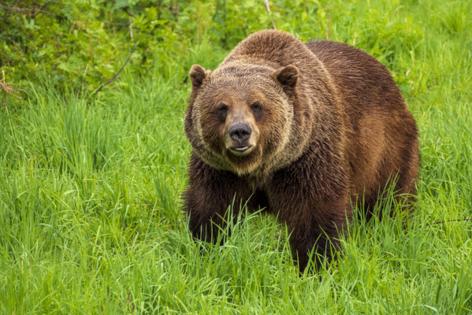Feds greenlight return of grizzlies to Washington's North Cascades
Published in Science & Technology News
SEATTLE —Grizzly bears will soon return to the North Cascades.
The National Parks Service and U.S. Fish & Wildlife Service filed a decision Thursday outlining a plan to capture three to seven grizzlies from other ecosystems in the Rocky Mountains or interior British Columbia and release them in the North Cascades each summer for five to 10 years. The goal is to rebuild a population of 200 bears in a century. In the Lower 48 states, the bears are a threatened species under the federal Endangered Species Act.
The agencies plan to designate the bears as a "nonessential experimental population" to provide "greater management flexibility should conflict situations arise."
Under this designation, some of the rules under the Endangered Species Act are relaxed, allowing people to harm or kill the bears in self-defense, or for agencies to relocate bears involved in conflict. The designation will allow landowners to call on the federal government to remove bears if they pose a threat to livestock, for example.
"[The rule] provides an expanded set of management tools in recognition that grizzly bear recovery in the North Cascades is dependent on community tolerance of grizzly bears," Brad Thompson, state supervisor for the U.S. Fish & Wildlife Service, said in a statement.
Grizzlies for thousands of years roamed the North Cascades, from the temperate rainforests of the west to the dry ponderosas and sagebrush east of the crest.
That is, until white settlers arrived and wiped the bears off the landscape. Beginning in the mid-1800s, they killed more than 3,000 for their pelts while miners and homesteaders killed countless others. There have been no verified sightings of the bears in the U.S. portion of the North Cascades since 1996, south of Glacier Peak.
Place names in the North Cascades recognize Indigenous peoples' long coexistence with the bears. Stetattle Creek was derived from stəbtabəl' (stub-tahb-elh), or grizzly bear, in the Lushootseed language spoken by the Upper Skagit people who lived on these lands for at least 10,000 years.
After years of advocacy, the Upper Skagit Tribe is looking forward to the bears' return to the rugged North Cascades that Upper Skagit people previously shared with grizzlies for thousands of years, said Scott Schuyler, policy representative for the tribe, earlier this year.
"The Upper Skagit celebrates this decision for the great bear, the environment, and everyone who desires a return to a healthy Indigenous ecosystem," Schuyler said in a statement. "We urge the agencies to move forward and put paws on the ground so the recovery may begin."
...continued
©2024 The Seattle Times. Visit seattletimes.com. Distributed by Tribune Content Agency, LLC.







Comments